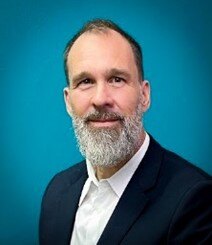Before the Bubble Bursts
Succession planning for FM

The facility management profession is facing retirement bubble, with many employees due to leave the workforce in the next decade. This older cohort is faced with the task of preparing the next generation of FM professionals and leaders with the skills and knowledge that it has gained over a lifetime of experience. This bubble has been exacerbated by the effects of the COVID-19 pandemic, where people are resigning in larger numbers (the Great Resignation) or are reluctant to return to the physical office post pandemic, thus affecting the ability for site-reliant services such as FM from operating efficiently.
Preparing for the departure of key or critical people is therefore an immediate tactical issue but is also of long-term strategic importance.
As a definition, “Succession planning (SP) is the ongoing process of identifying successors to the critical roles of and organization and developing them so they are ready to move into those roles when vacancies arise” – Michael Timms, author of Succession Planning that Works (2016)
The pros and cons of succession planning
Cons
One way to manage the loss of key employees is to simply hire new people. It is always good to bring new people into organizations, as they can bring new skills and fresh perspectives. The practice is indeed a good tool when used proactively to add diversity of skills and thinking, but when used to fill the departure of key and seasoned employees, the practice has downsides, especially when time is short.
The direct cost of recruiting and onboarding new employees is well understood; it also takes time, which is not always available, and there are real risks that new employees do not work out. They could be a poor fit with the culture or may not perform to expectations. Steep learning curves exist, such as quickly having to learn the idiosyncrasies of buildings, systems or policies. Incumbent employees can also be made to feel overlooked by new hires and teamwork can suffer.
There are executives who put forward arguments against formal SP. Their arguments include factors such as the cost to operate the plan in terms of management resources, cost, and employees’ attention. “Why should we be the training ground for the industry, these employees will just leave” is a common attitude.
Pros
On the other hand, the process is anticipatory and plans for future departures, whether planned or unplanned. It facilitates reducing the loss of tacit institutional knowledge and significantly reduces the impact of sudden departures. Its use increases the career opportunities of current employees, hence increasing their likelihood of staying in the organization. This all adds to the reduction in recruitment costs and helps direct training budgets to close specific gaps identified in the SP.
SP is not a quick fix but a long-term process that should be aligned with the organizational and FM strategic plan. People can be developed in line with the strategy; whether it be to add new properties, technology or services, employees can be developed with the planned timeframe in mind. This helps improve organizational competitiveness since resources can be made available when strategy is executed.
While many organizations claim to practice SP, the truth is that most of them do not do it well. Many plans fall short on substance or are informal at best.
Many organizations have a replacement plan in place. This is the first step, but it is not the actual SP. It simply identifies who is in place now to fill which positions in the event of a departure and which positions will need to be filled from outside. It is neither forward looking nor developmental in nature. It is a good tool however, it is the “as-is” position.
Identify key positions
Organizations must determine their key positions, some of which are often senior positions, but are not necessarily so. In the FM organization within a larger organization, the critical positions will be those that impact on the provision of FM services. To determine the key positions, the two main factors of assessment are:
- Replacement Difficulty - The difficulty in finding a replacement, either internally or externally, due to reasons such as technical competencies, building knowledge, or experience. An example could be a particular technician that requires a deep working knowledge of an idiosyncratic legacy system.
- Impact - The organizational impact of a sudden departure. Some departures will not have an immediate effect; other employees can take up some of the workload at least temporarily. Others will have an immediate effect that will be difficult for existing or new staff to perform.
Positions that rank as high on both scales are identified as key positions. Once SP is implemented, scores will change over time so annual review is useful.
Identifying high potential employees (HiPos)
The second step is to assess the current FM organization. Employees’ competency and performance appraisal (PA) for their current jobs can be used as a starting point for identifying developmental possibilities.
Then the organization will be assessed to determine the high potential candidates (HiPo) for the key positions. These employees may be several years away from being ready for a new position, but it is their potential that is important. Intuitively, managers usually know who these candidates are based on their current positions, so this assessment can be confirmatory.
To identify HiPo candidates the assessor will look at an employee’s current performance on one axis and promotional/leadership potential on the other axis. Employees who rank high on both axes will have a high potential for development. It is understood that the inputs for this exercise are subjective, so the inputs from multiple sources should be considered.
HiPo level of readiness
Developing a HiPo Level of Readiness is the next step and includes a competency gap and risk analysis on the high potential employees based on the requirements for the position(s) for which the candidate is being developed.
The competencies required for a facility manager for example, may include developing and managing budgets, cost management, decision making and team leadership. The competencies required for a senior executive such as a facility director of a campus may include strategic thinking, knowledge of corporate governance and skill at navigating a board room.
A numbered scale is suggested for this assessment since candidates can be compared to others using their total score. This should now indicate the number of years required for the HiPo to be ready for the new position. This level of readiness matrix will now be the foundation for creating developmental plans for the HiPos.
Organizational risk assessment
Parallel to all this, an organizational risk assessment should be done to determine the existing key positions that are at most risk. This will depend on the time until retirement or the likelihood of sudden departure, and the number and readiness of HiPos to fill the position.
For example, the facility manager has been identified as a key position. The is one year from retirement and there is only one HiPo identified, but she requires three years to be ready for position. This facility manager position will be red flagged as a high priority for attention. On the other hand, the vice president of facilities has four years to retirement and there are three HiPos identified for this position, two of them requiring two years of preparation. This position can be flagged as green – low priority.
Developmental plans
The key positions have been identified, the HiPos have been identified and their competencies assessed. Now their individualized developmental plans can be developed.
The developmental plans should focus on the competencies where gaps were identified. Developmental activities can include formal training programs, one-on-one coaching, on-the-job training, exposure to different areas of the company, taking on special projects, being invited to senior level meetings or attending industry conferences such as World Workplace, participating in IFMA Communities or Chapters.
The activities should be scheduled with the HiPos and their managers over a year. A monitoring matrix can be used to facilitate periodic reviews. Each year, the level of readiness should be reviewed for each HiPo to assess the progress. The plan can then be adjusted for the following year to refocus on weaknesses. All competencies will not improve at the same rate so the plan needs to remain flexible.
The full picture
The SP should be operated parallel to the normal appraisal system of the organization. Looking at plans for an employee’s future is a logical next step to the performance appraisal; many PA systems include a developmental component, however vague it might be. Additionally, the easiest time to perform an SP re-assessment is when doing the PA.
Once the SP is implemented for the key FM positions, it is recommended to expand it to include less critical positions and even the entire FM organization. It may be hard to justify such a program against the risk of loss or of recruitment for non-key positions.
Executive coaching and mentoring programs are very useful, whether as part of the SP or separately. Coaching is useful when it comes to the subtler competencies such as managing senior level conversations in a board room for example, or how to sell an asset replacement plan to the CEO. Mentorship is useful for guiding FMs along their career path and helping to shape their aspirations.
The success or failure of an SP lies with senior executives showing commitment and leadership in its implementation and management. The CEO must be the champion. The SP really needs to integrate with the organizational and facilities strategic plan, the same way that planning for future facility space must be alignment with the organization’s strategic plan.
When launching a program, there may often be resistance at all levels – “more work for me,” and change management techniques may be needed to manage such resistance. This is where senior level sponsorship is essential; no change initiative will succeed without it.
There are several software applications that provide succession planning modules, usually as part of an employee engagement or performance management package. Several top tier enterprise planning software will have a module to manage succession planning. It is also quite easy to manage this process with the use of Excel spreadsheets, if the organization is not too large.
This might all sound very intimidating and is not standardized, but the individual steps are quite simple. The process can be implemented in part or as an entire comprehensive system, but at its core, it forces FM leaders to think deeply about what happens when key FM staff leave the organization and how to prepare for the future.

Edward Kacal utilizes his engineering, project and business management expertise to strategically transform businesses through process and cultural realignment. He has been the leader in many M&A and business transformation, plant and equipment and IT projects. He is the president of the IFMA Business Community (BIZ), Chair of the IFMA Audit Committee, and the past Chair of the Facility Development & Management Committee of the Trinidad and Tobago Chamber of Commerce. He has lectured for several years at the master’s level in project management and strategic planning and is an active IFMA-certified instructor. Kacalis the CEO of Servus Limited, an Integrated FM service provider. He also holds an MBA and a BSc Industrial Engineering.
Read more on Leadership & Strategy , Training and Career Advancement
Explore All FMJ Topics









